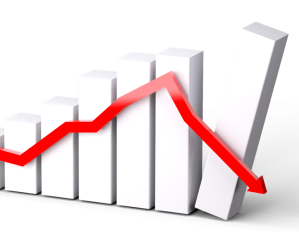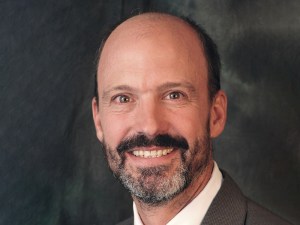CRE Braces for Interest Rate Hike No. 6
While the industry may be well-prepared, questions remain about the market's stability.
On Nov. 2, as part of its continued effort to combat inflation, the Federal Reserve will raise the baseline interest rate by yet another 75 basis points, its sixth increase this year, following hikes of the exact same margin in July and September.
With the borrowing costs increasing and inflation at its steepest in 40 years, nearly all commercial real estate sectors, types and markets are feeling or will experience their effects in some form or another, from borrowing costs and capital markets to the development and construction of new properties. Experts across the industry offer their latest insights.
The lending and investment sphere
Bradley Tisdahl, CEO of Tenant Risk Assessment predicts debt costs as increasing by at least 50 basis points by the end of the year, with equity costs for their part being driven more by the quality of the given asset than an on-hand capital stack.
READ ALSO: ULI, PwC Pick These CRE Trends to Watch for 2023
Overall, the current lending environment, especially following the rate hike, is likely to see some form of instability, but it will likely only be in the short-term, as both lenders and borrowers adjust to it, having also likely taken such volatility into account in their planning. It is not the first rate hike of its kind that the country has seen this year.
Understanding this, Jamie Woodwell, vice president of Research at the Mortgage Bankers Association, sees the new rate hike, in light of such a possible result as exacerbating an already “incredibly volatile” lending and investment environment, seeing such instability as significantly affecting the costs of capital for borrowers, and possibly making them more reluctant to issue loans.
As Woodwell explained to Commercial Property Executive, despite lenders actually possessing funds and capital to issue, the present and immediate future will still be “a tough time to transact,” and there may be disagreement between lenders and borrowers on what the appropriate loan terms and prices are.
In essence, it is an issue of demand over supply, and demand, as Tisdahl explained, is mainly in specific quality-oriented transactions with a deep aversion to risk; hence the reluctance to simply issue loans.

Michael Lefkowitz. Image courtesy of Rosenberg & Estis
Michael Lefkowitz, Managing Member of Rosenberg & Estis P.C. attested to this phenomenon in real time, recounting to CPE how, “We were recently involved in a deal that was moving through due diligence when the buyer backed out. There were no issues with the product or the viability of the business, but the price for the property simply did not match the cost of the debt.
More specifically, it is the loans tied closest to the Fed that will suffer the most, and these are mainly in the realms of construction, bridge and repositioning, according to Bryan Kenny, principal at Bandon Capital Advisors.
John Worth, lead economist & executive vice president for research and investor outreach of the National Association of Real Estate Investment Trusts, described the industry and investment trusts in particular as “quite well-prepared,” having reduced their leverage and debt-to-assets ratio to 33 percent, a roughly 10 basis point decrease from the 2008 financial crisis.
Furthermore, Worth sees no upcoming “huge cliffs of debt” being due, especially as 80 percent of the industry’s debt is fixed rate.
Attesting to this trend is Mark Ritchie, principal at Gantry. Ritchie sees lenders offering fixed rate loans as being the most resistant to the perceived market unpredictability following the rate hike, especially as the industry “operates in real time, and the lending world prices accordingly.
Jonathan Lee, President of George Smith Partners disagrees, seeing rates as “continuing to climb for the foreseeable future,” outside of the influence of businesses. To Lee, the only thing that could alleviate these woes is the Fed itself, or “some exogenous event outside the country.”
READ ALSO: These Factors Could Jumpstart CRE Transactions
By contrast, Richie described variable rate lending markets as being “hammered” by the current lending environment, especially at a time where buyers are being more cautious about the types of transactions they partake in.
Sabina Reeves, chief economist of CBRE Investment Management, is in agreement, telling CPE that “the conversation has moved on;” barring any surprises or a possibly higher than announced increase in interest rates, Reeves sees other matters as being more on the minds of lenders and borrowers. To Reeves, any possible change in this aspect, especially where loan-to-value ratios may be concerned in a given transaction, is more a matter of the context and rhetoric surrounding them and a “material impact” on the ability to actually service and follow through on the loan than the actual anticipated change in numbers, a relatively common occurrence by comparison.
The effects of the interest rate hike on deal making
Still, lenders and borrowers cannot predict for certain what the realm of pricing and closing deals will actually look like following the rate hike. Woodwell sees the rate hike as “changing loan amounts and payments dramatically,” making it “harder for participants in the deal to keep up with those changes.” Consequently, lenders might become more reluctant to issue loans, which Woodwell anticipates as causing “a lot of pause in transaction activity,” particularly due to the unknowns associated with a spiked-up interest rate and buyers, sellers and investors [working] through where they think the market equilibrium is headed.”
Tisdahl similarly described a more frantic deal making environment; “Right now, we are seeing clients act more aggressively to close deals before pre-anticipated hikes kick in,” he said.

Sabina Reeves, Chief Economist, CBRE Investment Management. Image courtesy of CBRE Investment Management
Reeves adopted a more cautious approach, telling CPE that “there are still parts of the market where you can get attractive terms,” and that following the hike, there are still “attractive lending terms out there that make sense.”
Qualifying these viewpoints was NAREIT data cited by Worth that saw a significant slowdown in transactions, especially at a time where the bid-ask gap between buyers, sellers and lenders appears to be widening; “in the second quarter, we actually saw that transactions activity, while it fell dramatically from the fourth quarter [of 2021], with $18 billion in transactions, was a pretty good quarter in terms of transactions, but certainly down very significantly from earlier in the year,” Worth detailed. The decline in deals is reflective of not so much the dire economic outlook, but the uncertainty associated with following through on deals amid a yet-again hiked-up interest rate.
In addition to the uncertainty, it is also the sheer number and frequency of rate increases that have caused this slump; still, it only appears to be in the short term. Kenny explained to CPE, “We will find a new equilibrium and transact again. The challenge has been the frequency in which rates have increased. This rapid pace has made finding that equilibrium a bit harder as it has created a bit more uncertainty as to when rates will stabilize.”
The development dilemmas

Bryan Kenny. Image courtesy of Bandon Capital Advisors
In terms of the actual development of properties, all were in agreement that development is a particular aspect of the industry likely to be affected by the rate hike, and that such effects are likely made worse by the very inflation the interest rate hike is seeking to prevent, as well as latent supply chain struggles and energy prices.
Woodwell sees ground-up development of office properties as suffering in particular, especially as the sector as a whole undergoes an unprecedented transformation; “those costs have become pretty significant for development,” he told CPE. Kenny agreed, describing office as likely suffering more compared to industrial and retail, which seem well-equipped to weather the coming storm brought about by the next rate hike; “It is a sector that was greatly impacted by the pandemic with high vacancy rates and sublease levels currently at record highs… multifamily and industrial demand soared during the pandemic, and we continue to see strong demand here. Retail was impacted by the pandemic, but we are seeing tremendous recovery and lenders still see opportunity in this space,” he said.
Similarly, Lee sees an industry-wide slowdown of development efforts as compounded by the current economic situation, negatively affecting all asset classes in some form or another; “With costs still high, the labor market tight, and lenders taking a pause, the development sector of real estate will slow down across all asset classes,” Lee concluded.
Reeves described development headwinds that may emerge as a result of the rate hike as being a matter of context, in terms of both the asset class and the level of risk associated with its development, with the borrowers in development efforts assuming much of the burden; “they don’t want to be caught putting product into a market that’s weaker in 18 months’ time,” Reeves explained.












You must be logged in to post a comment.